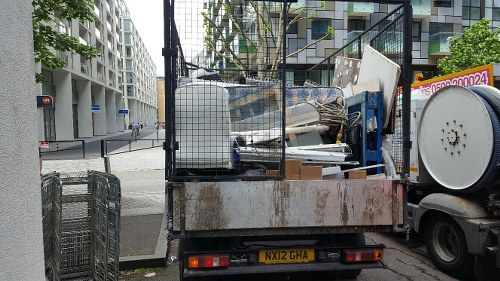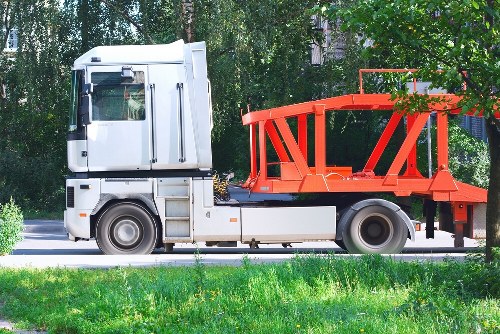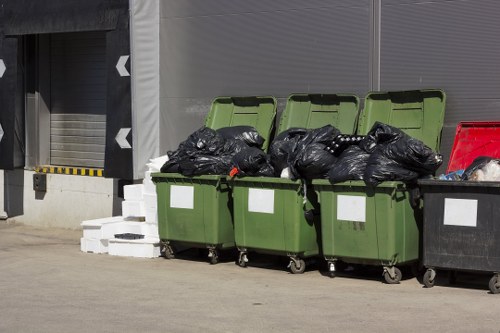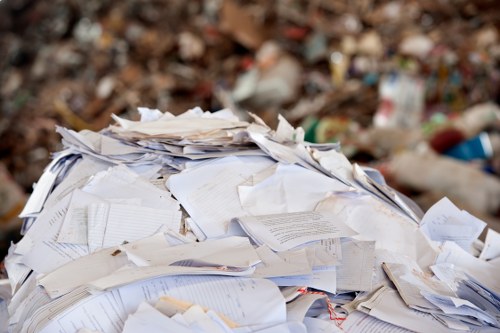Efficient Construction Waste Clearance in Norwood
Understanding Construction Waste Clearance

Construction projects, whether large or small, generate significant amounts of waste. Proper construction waste clearance in Norwood is essential to maintain a clean environment, comply with local regulations, and promote sustainability. Efficient waste management not only benefits the community but also enhances the reputation of construction businesses.
Managing construction waste involves the removal, sorting, and disposal of materials such as concrete, wood, metal, and plastics. These materials, if not handled correctly, can harm the environment and pose safety risks on construction sites.
Norwood, being a bustling hub for construction activities, has specific guidelines and requirements for waste clearance. Adhering to these ensures that projects run smoothly without legal or environmental repercussions.
Importance of Proper Waste Clearance

Proper waste clearance is critical for several reasons:
- Environmental Protection: Prevents pollution and conserves natural resources by recycling and reusing materials.
- Regulatory Compliance: Ensures adherence to local laws and regulations, avoiding fines and penalties.
- Cost Efficiency: Reduces disposal costs through effective waste management strategies.
- Site Safety: Minimizes hazards, ensuring a safer working environment for all involved.
By prioritizing waste clearance, construction companies can contribute to a greener Norwood and promote sustainable building practices.
Moreover, proper waste management enhances the overall aesthetics of construction sites, making them more presentable and professional.
Types of Construction Waste

Construction waste can be categorized into various types, each requiring specific handling and disposal methods:
- Concrete and Masonry: Includes broken concrete, bricks, and blocks. These materials can often be recycled into new construction projects.
- Wood: Excess lumber and scraps can be repurposed or processed for use in other industries.
- Metals: Steel, aluminum, and other metals are highly recyclable and can be sold to recycling centers.
- Plastics: Includes various plastic materials that need to be sorted for recycling or proper disposal.
- Hazardous Waste: Materials like paints, solvents, and asbestos require specialized handling to prevent environmental contamination.
Understanding the different types of construction waste is the first step towards effective clearance and recycling.
Process of Construction Waste Clearance

1. Waste Assessment
Before commencing waste clearance, a thorough assessment of the site is conducted to identify the types and quantities of waste. This helps in planning the disposal and recycling processes effectively.
2. Sorting and Segregation
The identified waste is then sorted into categories such as recyclables, non-recyclables, and hazardous materials. Proper segregation ensures efficient recycling and reduces the burden on landfills.
3. Transportation
Once sorted, the waste is transported to designated facilities for recycling or disposal. Selecting appropriate transportation methods is crucial to maintain safety and compliance with regulations.
4. Recycling and Disposal
Recyclable materials like metals and certain plastics are sent to recycling centers, while non-recyclable waste is disposed of responsibly in landfills or incinerators.
Implementing a structured clearance process minimizes environmental impact and promotes sustainable construction practices.
Benefits of Using Professional Services

Expertise and Efficiency
Professional construction waste clearance in Norwood companies bring expertise and efficiency to the process. They are well-versed with local regulations and employ best practices to ensure compliance and optimal waste management.
Cost-Effective Solutions
Outsourcing waste clearance can be more cost-effective than handling it in-house. Professionals have the resources and networks to recycle materials, reducing overall disposal costs.
Time Savings
Hiring experts allows construction teams to focus on their core activities, saving time and ensuring that projects stay on schedule.
Environmental Responsibility
Professional services prioritize eco-friendly methods, contributing to a sustainable environment in Norwood.
Choosing the right service provider is crucial for achieving effective and responsible construction waste management.
Local Regulations and Compliance
Norwood's Waste Management Laws
Norwood has established specific regulations governing construction waste clearance to protect the environment and public health. These laws stipulate how waste should be handled, stored, and disposed of.
Permit Requirements
Depending on the volume and type of waste, obtaining the necessary permits is mandatory. Professional waste clearance services are familiar with these requirements and can assist in obtaining the necessary documentation.
Penalties for Non-Compliance
Failure to adhere to local regulations can result in hefty fines and legal actions. Ensuring compliance through proper waste management practices is essential to avoid such consequences.
Environmental Impact Assessments
For larger projects, conducting environmental impact assessments (EIA) may be required. These assessments evaluate the potential effects of construction activities on the environment and outline strategies to mitigate negative impacts.
Staying informed about local laws ensures that construction projects in Norwood are environmentally responsible and legally compliant.
Sustainable Practices in Waste Clearance
Recycling and Reuse
Emphasizing recycling and reuse reduces the amount of waste sent to landfills. Materials such as metals, wood, and certain plastics can be repurposed for future construction projects.
Waste Reduction Strategies
Implementing strategies like precise material estimation and efficient construction techniques can significantly reduce waste generation at the source.
Eco-Friendly Disposal Methods
Using environmentally friendly disposal methods minimizes the ecological footprint of construction activities. This includes choosing green-certified disposal facilities and adhering to sustainable practices.
Education and Training
Educating construction workers about the importance of waste management and providing training on proper clearance techniques fosters a culture of sustainability on construction sites.
Adopting sustainable practices not only benefits the environment but also enhances the reputation of construction firms committed to green initiatives.
Choosing the Right Waste Clearance Service
Experience and Expertise
When selecting a construction waste clearance service in Norwood, consider their experience and expertise in handling various types of construction waste. Experienced providers are more likely to offer efficient and compliant services.
Range of Services
Ensure that the service provider offers comprehensive solutions, including waste assessment, sorting, transportation, recycling, and disposal. A full-service provider can streamline the waste management process.
Customer Reviews and Reputation
Research customer reviews and assess the provider’s reputation within the community. Positive feedback and a strong reputation indicate reliability and quality service.
Pricing and Transparency
Transparent pricing structures without hidden fees are important. Compare quotes from different providers to ensure you receive fair and competitive rates.
Compliance and Certifications
Verify that the service provider complies with local regulations and holds necessary certifications. This guarantees that they adhere to industry standards and best practices.
Selecting the right waste clearance service is crucial for effective and responsible construction waste management in Norwood.
Cost Factors in Waste Clearance
Volume of Waste
The amount of waste generated directly affects the cost of clearance. Larger volumes may require more resources and time, influencing the overall pricing.
Type of Waste
Different types of waste have varying disposal costs. Hazardous materials, for example, typically incur higher fees due to the specialized handling required.
Transportation Costs
The distance to disposal or recycling facilities can impact transportation expenses. Services located closer to these facilities may offer more competitive rates.
Recycling Fees
Recycling certain materials may involve additional costs or provide opportunities for revenue through material resale. Understanding these dynamics can affect overall cost planning.
Service Frequency
Regular waste clearance services may offer discounted rates compared to one-time pickups. Evaluating the frequency of service needs can help manage costs effectively.
Accurately assessing these factors ensures that you budget appropriately for construction waste clearance in Norwood.
Impact on the Local Community
Environmental Benefits
Effective waste clearance reduces pollution and conserves resources, contributing to a healthier environment for Norwood residents.
Economic Advantages
Recycling and repurposing materials create economic opportunities, supporting local businesses and reducing dependency on imported materials.
Public Health and Safety
Proper waste management minimizes health hazards associated with unmanaged construction debris, ensuring safer living and working conditions.
Aesthetic Improvements
Maintaining clean construction sites enhances the visual appeal of Norwood, making it a more attractive place to live and work.
Community Engagement
Engaging the local community in waste management initiatives fosters a sense of responsibility and collective effort towards sustainability.
Construction waste clearance plays a pivotal role in the overall well-being and development of the Norwood community.
Technological Innovations in Waste Clearance
Automated Sorting Systems
Advancements in technology have led to the development of automated sorting systems that increase the efficiency and accuracy of waste segregation.
Recycling Technologies
Modern recycling technologies enable the processing of a wider range of materials, enhancing the potential for waste reduction and material recovery.
Waste Tracking Software
Software solutions for tracking waste generation, transportation, and disposal improve transparency and accountability in waste management processes.
Eco-Friendly Disposal Methods
Innovative disposal methods, such as waste-to-energy processes, convert waste into usable energy, reducing landfill dependency and promoting sustainability.
Mobile Applications
Mobile apps facilitate real-time communication and coordination between construction teams and waste clearance services, streamlining the entire process.
Embracing technological innovations enhances the effectiveness and sustainability of construction waste clearance in Norwood.
Future Trends in Construction Waste Management
Increased Recycling Rates
The construction industry is expected to adopt more aggressive recycling targets, driven by environmental regulations and sustainability goals.
Circular Economy Models
Embracing circular economy principles, where materials are reused and recycled continuously, will become more prevalent in construction practices.
Green Building Certifications
More construction projects will seek green building certifications, which require strict adherence to waste management and sustainability standards.
Integration of AI and Robotics
Artificial intelligence and robotics will play a larger role in automating waste sorting and processing, increasing efficiency and reducing human error.
Enhanced Collaboration
Greater collaboration between construction firms, waste management companies, and regulatory bodies will drive improvements in waste clearance processes.
Staying abreast of these trends ensures that construction waste clearance in Norwood remains effective and forward-thinking.
Case Studies: Successful Waste Clearance Projects
Project A: High-Rise Building
In the construction of a 30-story building in Norwood, a comprehensive waste management plan was implemented. By segregating waste on-site and partnering with local recycling centers, over 60% of the construction waste was recycled, significantly reducing disposal costs and environmental impact.
Project B: Residential Complex
A residential project adopted sustainable waste clearance practices by using recycled materials and minimizing waste generation through precise planning and material estimation. This not only lowered costs but also earned the project green building certification.
Project C: Commercial Plaza
A commercial plaza construction utilized advanced waste tracking software to monitor waste generation and clearance in real-time. This approach ensured compliance with local regulations and optimized the waste disposal process, enhancing overall project efficiency.
Project D: Infrastructure Development
During the development of a new infrastructure project, the integration of automated sorting systems facilitated the efficient segregation and recycling of construction waste. This innovative approach set a benchmark for future projects in Norwood.
These case studies highlight the benefits and effectiveness of proper construction waste clearance in various project types.
How to Get Started with Waste Clearance
Initial Consultation
Begin by consulting with a professional waste clearance service to assess your project’s specific needs. They can provide tailored solutions based on the type and volume of waste generated.
Develop a Waste Management Plan
Create a detailed waste management plan that outlines the processes for waste segregation, transportation, recycling, and disposal. This plan should align with local regulations and sustainability goals.
Engage Stakeholders
Involve all relevant stakeholders, including construction teams, waste management providers, and regulatory bodies, to ensure seamless implementation of the waste clearance plan.
Implement and Monitor
Execute the waste management plan and continuously monitor its effectiveness. Make necessary adjustments to optimize the process and achieve desired outcomes.
Evaluate and Improve
Regularly evaluate the waste clearance practices to identify areas for improvement. Incorporate feedback and stay updated with the latest waste management trends and technologies.
Following these steps ensures a smooth and effective construction waste clearance process in Norwood.
Conclusion
Commitment to Sustainability
Effective construction waste clearance in Norwood is a critical component of sustainable building practices. It not only safeguards the environment but also enhances the efficiency and reputation of construction projects.
Take Action Today
Embrace responsible waste management by partnering with professional services. Contact us today to ensure your construction project adheres to the highest standards of waste clearance and sustainability.
Join the Effort
Be a part of Norwood’s commitment to a cleaner and greener future. Book your service now and make a positive impact through effective construction waste management.